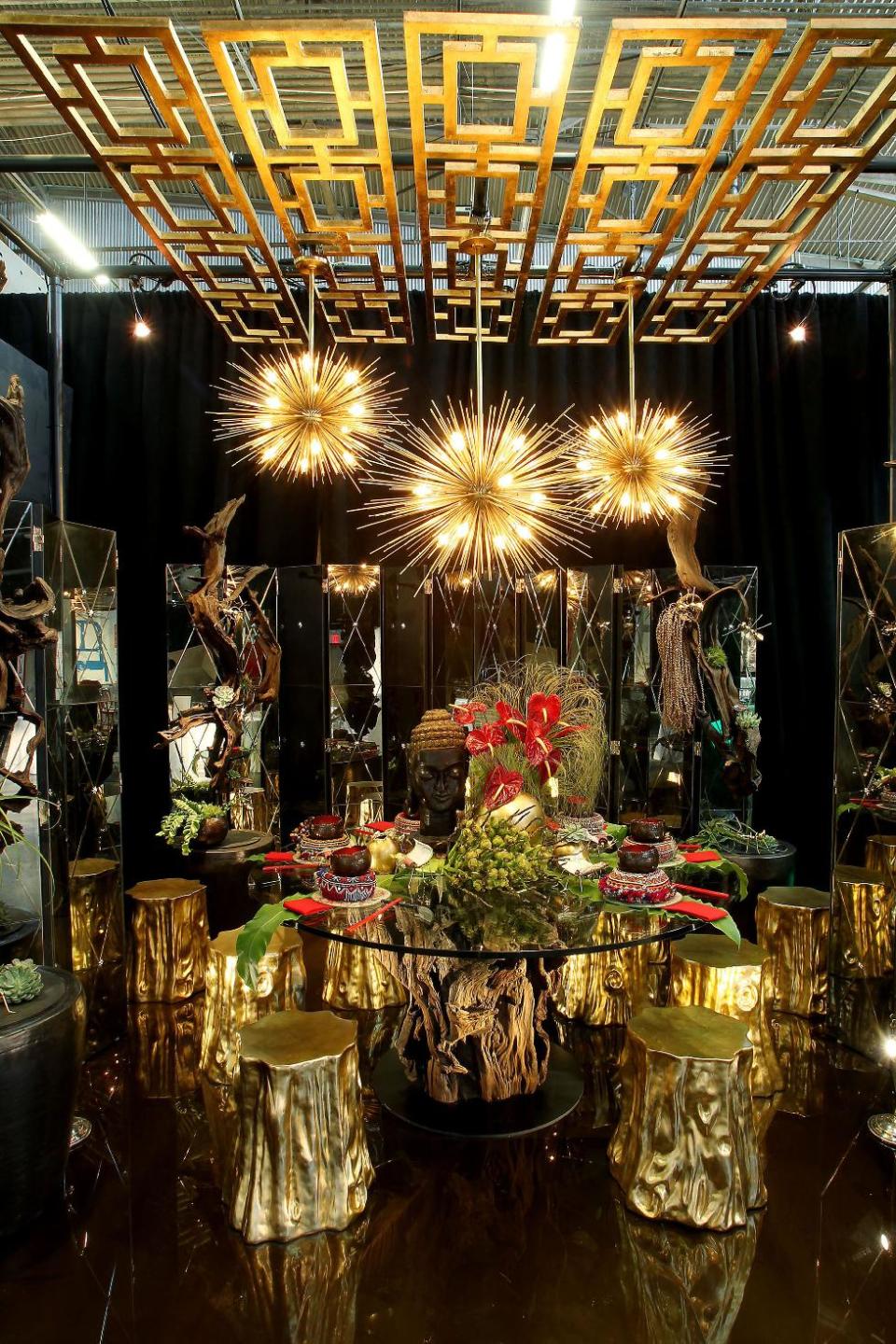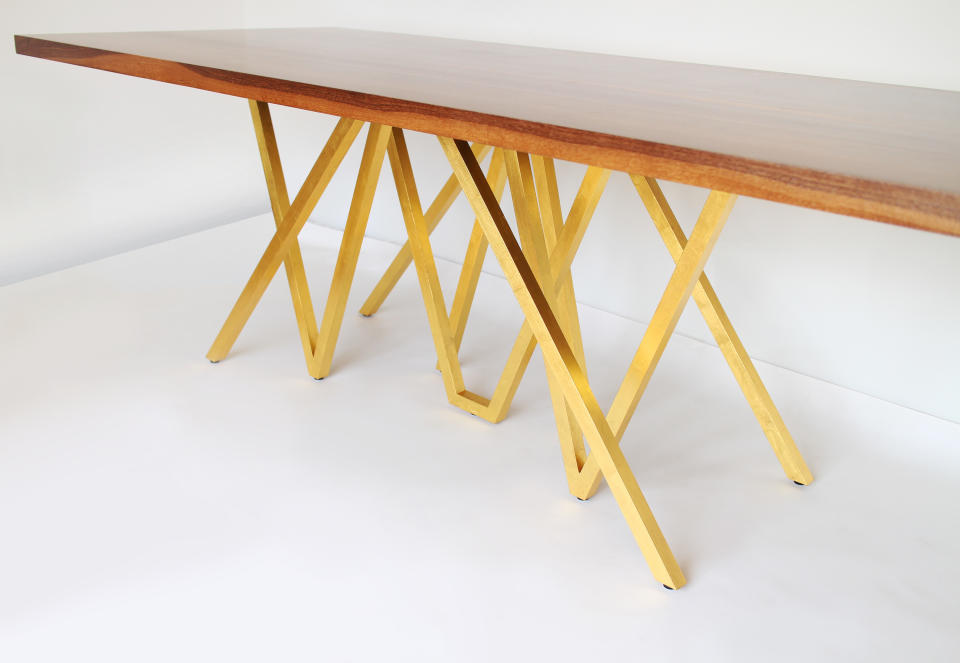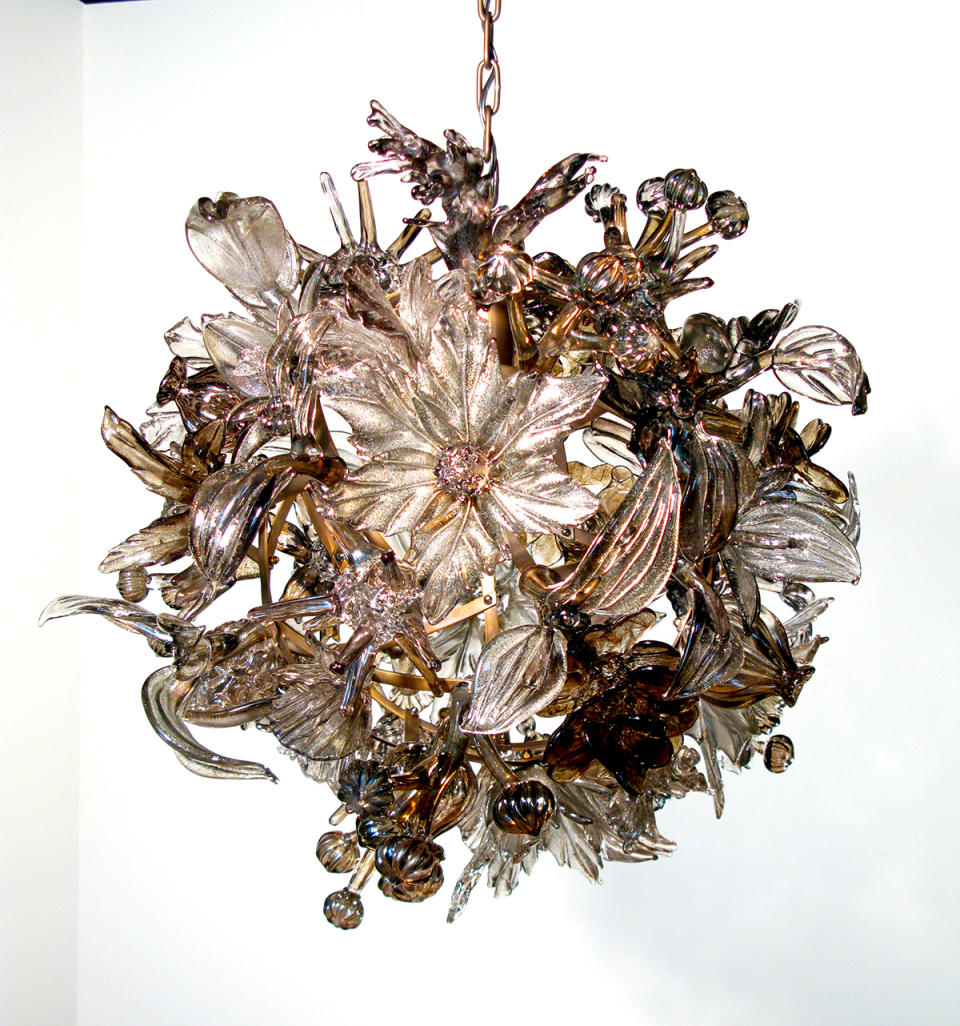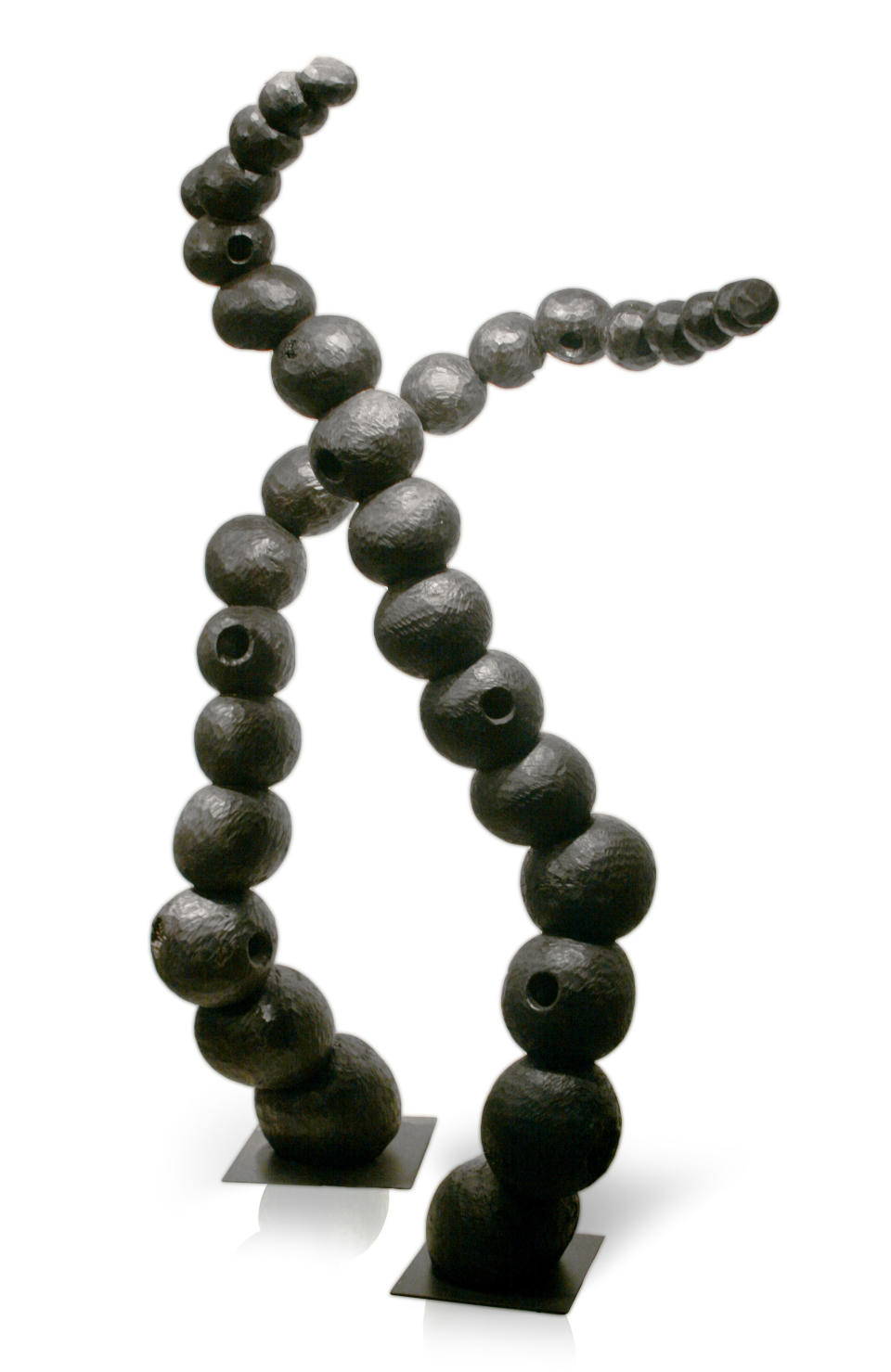Right at Home: making a premier design show
NEW YORK (AP) — This year's Architectural Home Design Show, one of the industry's premier events, was attended by tens of thousands of interior designers, architects and design enthusiasts looking for inspiration. Few could have imagined all the effort and organized chaos that went into making it.
On the day before the four-day show opened late last month, much of Pier 94's 130,000-odd square feet on the Hudson River was a sea of bubble wrap, cardboard, moving blankets and bungee cords, providing only glimpses of the glamour, elegance and innovation that would shortly be on display.
Three-hundred booths had to be set up. Walkie-talkie-armed wranglers herded a long line of vans off the West Side Highway and toward a staging door, where another battalion of expediters made sure that the goods they dropped off — 900,000 pounds of freight when all was said and done — remained grouped and undamaged till teams came with carts and dollies to deliver them to the right booths.
Furniture, appliances, bathtubs, rugs, faucets, art and accent pieces had to wait for flooring to be installed, walls painted, lighting rigged. There was 60,000 square feet of carpeting alone.
Buckets of flowering branches, boxes of exotic blooms and bags full of moss stood near the Dining by Design section of DIFFA (Design Industries Foundation Fighting AIDS), where designers and companies presented imaginative dining spaces in support of the organization's efforts against the disease.
Calvin Klein Home ran a river of moss down the center of a massive wood table. A giant nest of cherry blossoms hovered over the table at Ralph Lauren Home. Several men who looked like they'd be comfortable on a logging trail were at the Arteriors space, carefully unwrapping gilded tree stumps to put around a glass-topped table. Jess Gordon's team at the Fashion Institute of Technology's booth slid plastic vertebrae onto a massive set of ribs for a conceptual whale's belly. Tin lanterns and rope created a chandelier to anchor the nautical-themed space. (www.diffa.org )
Designer Tucker Robbins, who collaborates with artisans around the world on sustainable furniture and accessories, was figuring out how to get a large rug into a less-large space. Ready to be placed were a group of his Snaka Waka posts — circular balls carved from coffee wood in Cameroon and stacked to make a snake shape. Sulawesi rattan fish-basket lights were strung overhead. (www.tuckerrobbins.com )
Patrick Weder showed pendant lights made of wire and opaque paper.
"People always call them honeycombs, but when I designed them, I wasn't consciously thinking of that — I just started forming the wire and adding the paper, and soon I had these wonderful organic shapes," he says. (www.patrickweder.com )
The "Made" section of the show featured up-and-coming designers. Sculptor and designer Elizabeth Lyons showed an enormous chandelier made of glass leaves and petals. George Venson hung his illustrated wallpaper rolls like whimsical waterfalls from the top of the booth; the tumbles of paper featured koi fish, butterflies, even a seductive lip print, in a riot of color. (www.voutsa.com )
Alex Rosenhaus and Drew Arrison, the young duo behind Alex Drew & No One, hung a walnut-framed triangle mirror on the backdrop of their booth; they brought several of their signature angular furniture pieces, including a dining table perched on 24-karat-gold-painted legs, from their new studio in Detroit. They see that city as the next frontier for young furniture designers.
"We're able to get a huge amount of studio space there for next to nothing," Arrison said. Besides, Rosenhaus is from Detroit. "We'd heard that artists were grabbing up abandoned or foreclosed buildings there, so we decided to check it out."
Many skilled tradespeople — welders, fabricators — who used to work in the car industry are eager to lend their expertise to furniture designers in Detroit, the pair said. "You can also find really high-quality metals and tool parts," Rosenhaus added. (www.alex-drew.com )
The New York show's "Refresh" section, where the big international kitchen and bath folk were, was full of high-end tubs, sinks, appliances and countertops. Jenn-Air introduced a fridge with an all-black interior, making even leftovers look good. Radiant Orchid, Pantone's color of the year, found its way onto a range hood at Prizer. Dacor broke up a long, sleek run of stainless steel with a cheery backsplash of blue skies and puffy clouds. (www.jenn-air.com, www.prizerhoods.com, www.dacor.com )
Around the show, distressed wood in grays, brown and "greige," a hybrid gray/beige, often mixed with sleek elements. Ligne Roset clad their booth walls in distressed wood; JM Lifestyles installed an outdoor kitchen using a proprietary engineered-concrete. Scavolini and Diesel partnered on an unfitted kitchen with rugged modular pieces in steel and weathered-looking wood.
Architectural Digest Editor-in-Chief Margaret Russell said the style was gravitating to rooms throughout the home.
"Mixing contemporary pieces with rustic elements is a trend that we've seen in several homes featured in recent issues of Architectural Digest," she said.
"It's the perfect way to add warmth to a space that needs to function well."






